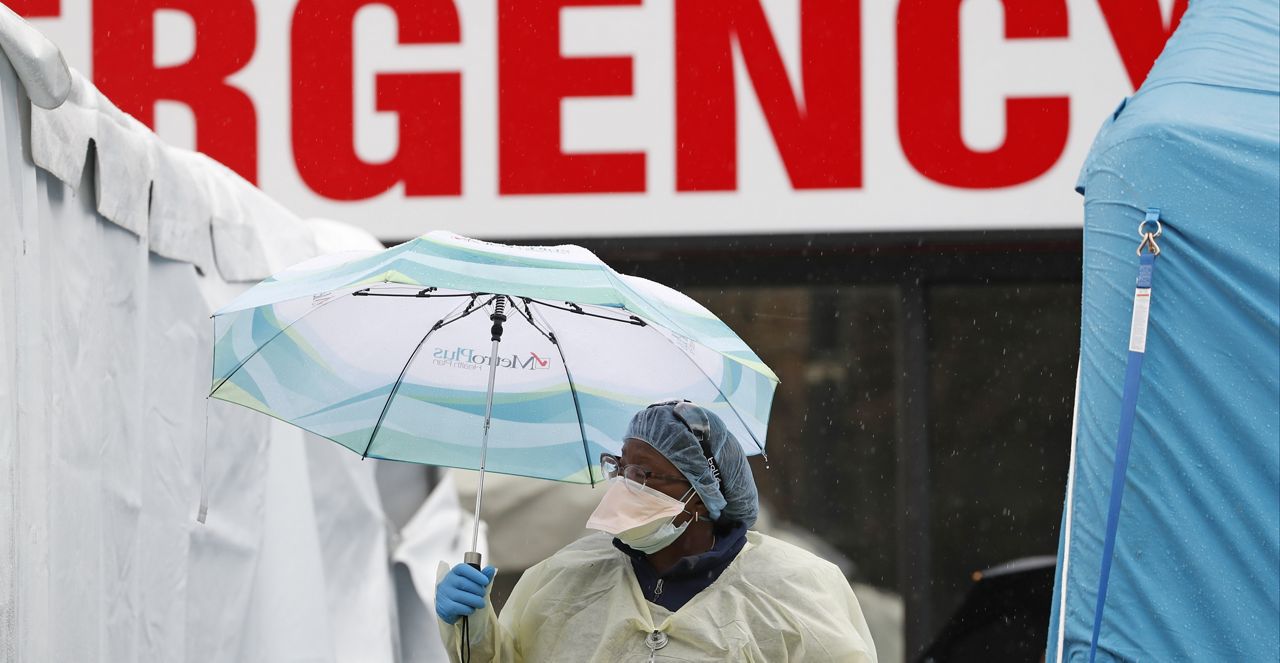On March 1, bail reform and a Medicaid budget shortfall were the loudest issues coming out of the state Capitol building. College students were getting ready for spring break. Albany was preparing to host the first rounds of the NCAA Tournament. And, outside of Facebook memes, COVID-19 seemed to live primarily on the opposite coast of the country, or in a different country altogether.
One short month later, there’s a new budget shortfall, college campuses are empty and the novel coronavirus has turned upside down every part of life in New York. Bars and restaurants are dark. Tens of thousands are now jobless. Schools are completely online. Sports are nonexistent. And our daily vocabulary is filled with brand new phrases that are already iconic, like “social distancing” and “flatten the curve.”
- LIVE UPDATES: Coronavirus Impact Across CNY
- LIVE UPDATES: Coronavirus Impact Across Capital Region, Hudson Valley
- LIVE UPDATES: Coronavirus Impact Across Rochester
- LIVE UPDATES: Coronavirus Impact Across Buffalo
On March 1, New York reported its first positive case of COVID-19. Today, there are more than 75,000.
Not even three weeks ago, the first person in the state died from the virus. That number is now greater than 1,500. Central Park, a place normally reserved for recreation, is now a makeshift field hospital in a scene that more resembles wartime.
Health care staff are overwhelmed. Medical supplies are short. The number of patients continues to grow, as do the dead. Each day, it’s still a staggering amount.
And it’s only been one month.

While New York City and the immediate downstate region have been the focus as the nation’s coronavirus hotspot, upstate has not been spared. The first upstate case wasn’t reported until March 7, in Saratoga County. Within the last 2 days, every one of New York’s 62 counties is now affected.
The most cases can be found in the counties home to upstate’s large cities of Albany, Buffalo, Rochester and Syracuse. Parts of Western New York in particular are weathering the storm more than others, with Erie County surpassing 550 confirmed cases and Monroe County over 300.
Deaths have also been reported in counties all across upstate, from Livingston, to Broome, to Herkimer and Dutchess.
And all signs say the worst is yet to come.
Governor Andrew Cuomo said Tuesday the “apex” of the virus for New York is expected to come in 7-21 days.
Upstate hospitals and medical staff are regularly being called to volunteer and assist by the governor during his daily briefings that have garnered national attention. He has repeatedly said hospitals across the state need to operate as a combined effort, though no COVID-19 patients have been sent to upstate facilities for care at this time.
“Combining that whole system, and you’re no longer just the Western New York hospitals or the Central New York hospitals, it’s one coordinated system. It’s much easier said than done, but we have to do it," Cuomo said Tuesday.
This is not just a public health crisis, of course. New York’s war against COVID-19 is a two-front one. The health of the state’s economy is also in trouble.
Mandated business closures, event cancellations and stay-at-home orders have brought New York’s powerful economy to a standstill. More than 80,500 jobless claims were filed last week, an initial increase for unemployment insurance by 520 percent. Each of the state's 10 labor markets saw a minimum 284 percent spike in unemployment insurance claims.
- Jobless Claims Flood State Labor Department
- Cuomo Considers What’s Next For the Economy
- Small Businesses Say They've Been Slammed by Pandemic
That number is likely an undercount: Many people who have lost their jobs either have not qualified for unemployment insurance or could not get through the jammed phone lines to make a claim. From March 16 to March 21, the state Department of Labor received 1.7 million calls and 2.2 million web hits.
Plans on how to best restart the economy at some point are ongoing, but it is no easy task.
"You can't stop the economy forever," Cuomo said last week.
The governor has not been thrilled by Congress’ recent historic $2 trillion federal coronavirus relief law, saying it’s simply not enough to fill the state’s needs. New York has already spent around $1 billion in its fight against the coronavirus and Cuomo says he expects the state will spend billions more before this is all over. New revenue projections show the state is already looking at around a $15 billion revenue shortfall this year.
The fast pace of both the virus itself and the way it has upended daily life in its first month has created challenges of a lifetime for the state of New York. And those challenges will no doubt increase in the second one.



